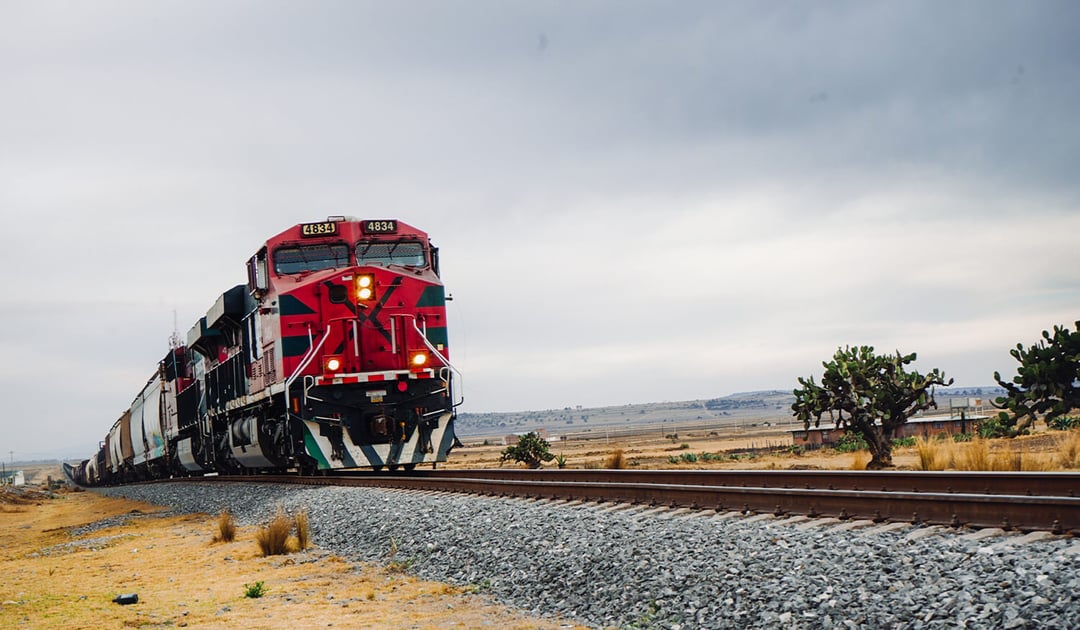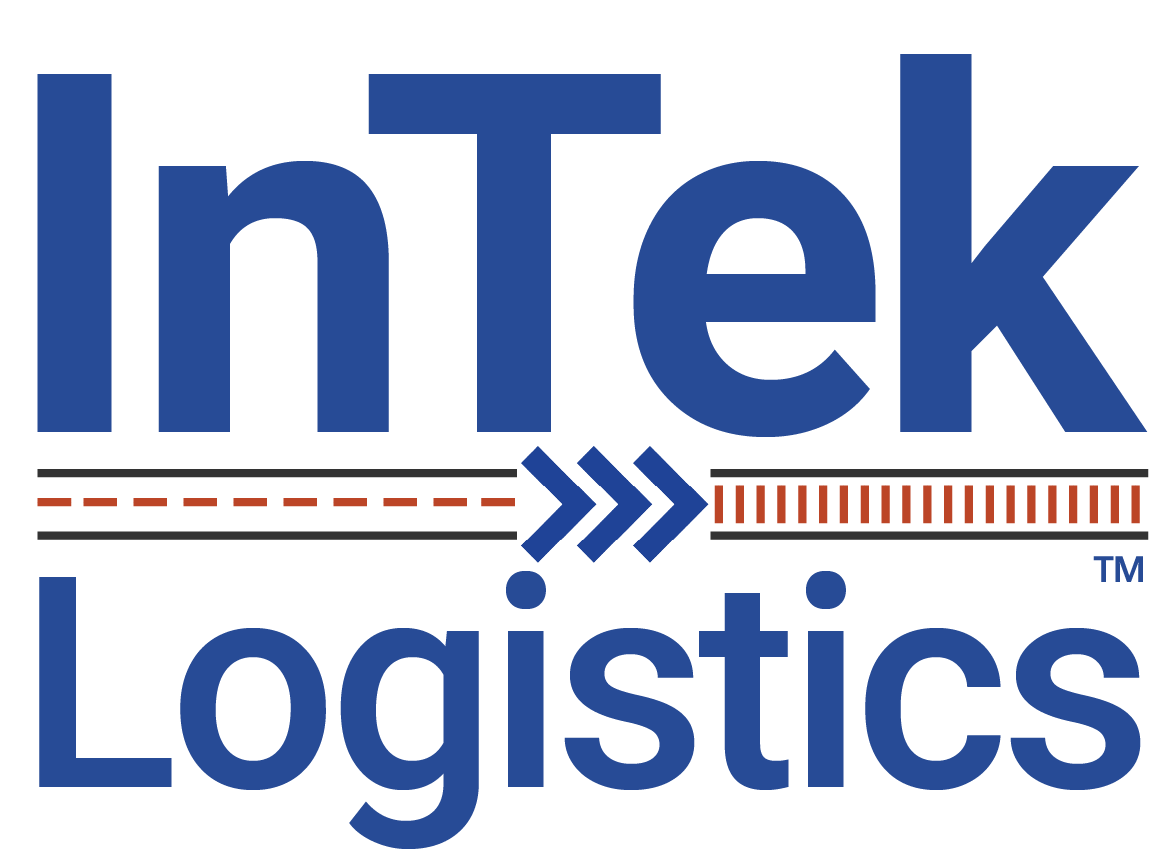
U.S.-Mexico customs clearance: Intermodal tops truckload in efficiency
February 19, 2025 •Rick LaGore

Cross-border shipping between the United States and Mexico is a critical part of North American supply chains, yet many are unaware just how efficient intermodal shipping is at the border. Some customs brokers mistakenly advise U.S. shippers against intermodal, claiming it causes delays in customs clearance compared to truckload shipping.
However, this simply isn’t true. In fact, when properly managed, intermodal cross-border shipping is often more efficient than truckload due to its structured pre-clearance customs process and seamless railroad interchange.
This article will debunk the myth that intermodal customs clearance is problematic by:
- Explaining the customs process for truckload and intermodal shipments into Mexico.
- Detailing how intermodal rail containers move between U.S. and Mexican railroads via a quick and seamless interchange.
- Highlighting the advantages of intermodal shipping over truckload for cross-border freight.
Clearing Customs for a Truckload Shipment into Mexico
Step 1: Preparing Documentation
Before a truckload shipment can enter Mexico, it must have the following required documents:
- Commercial Invoice – Provides details on the shipment’s value, origin, and contents.
- Bill of Lading (BOL) – The transport document issued by the carrier.
- Packing List – Lists all items inside the shipment for customs review.
- Certificate of Origin (if applicable) – Required for preferential duty treatment under USMCA.
- Import/Export Permits (if necessary) – Depending on the product being shipped.
A Mexican customs broker must validate and submit these documents before the shipment reaches the border.
Step 2: Export Process in the U.S.
- The U.S. customs broker files the export declaration if required.
- The truck moves to a designated border crossing (e.g., Laredo, TX; El Paso, TX; McAllen, TX).
Step 3: Transloading or Direct Cross-Border Movement
- Transloading at the Border – Freight is offloaded from a U.S. truck and reloaded onto a Mexican carrier, since many U.S. carriers lack operating authority in Mexico.
- Direct Movement – Some carriers with cross-border authority haul trailers across without transloading.
Step 4: Import Process into Mexico
- The Mexican customs broker files the import declaration.
- The shipment undergoes customs clearance at the border.
- Duties and taxes (if applicable) must be paid before release.
- The truck is cleared to move inland into Mexico.
Clearing Customs for an Intermodal Shipment into Mexico
Step 1: Preparing Documentation
Intermodal shipments require the same documentation as truckload shipments:
- Commercial Invoice
- Bill of Lading
- Packing List
- Certificate of Origin (if applicable)
- Import/Export Permits (if required)
The key difference between truckload and intermodal cross-border clearance?
Intermodal shipments benefit from pre-clearance, reducing delays at the border.
Step 2: U.S. Export Process and Rail Movement to the Border
- The container moves via rail from an origin intermodal terminal (e.g., Chicago, Dallas, Los Angeles) to the U.S.-Mexico border.
- The U.S. customs broker clears the export documentation before the shipment reaches the border.
Step 3: The Seamless Railroad Interchange Between U.S. and Mexico Railroads
One of the biggest myths about intermodal is that the border interchange causes delays. This is not the case—the transition is seamless and efficient, thanks to a steel-wheeled interchange.
How the Rail Interchange Works:
- Union Pacific (UP) and BNSF do NOT operate trains inside Mexico.
- Instead, they interchange containers with a Mexican railroad:
- Ferromex (FXE) or Kansas City Southern de México (KCSM).
- This interchange is steel-wheeled, meaning:
- The container stays on the railcar—no unloading or transloading.
- The train is transferred quickly, just like a railroad interchange in Chicago when moving domestic intermodal freight.
- There is no disruption or delay—just a simple railroad handoff.
Step 4: Import Process into Mexico
- Many intermodal shipments are pre-cleared before arriving at the border, reducing wait times.
- Once cleared, the train continues into Mexico without delay.
- The container moves to an inland intermodal terminal (e.g., Monterrey, San Luis Potosí, Mexico City).
Why Intermodal Clearance is as Efficient as Truckload – If Not Better
Streamlined and Pre-Cleared Process
- Intermodal shipments are typically cleared before arrival at the border.
- Truckload shipments often face unpredictable delays at customs due to congested border crossings.
Faster and More Predictable Border Crossing
- The steel-wheeled interchange between U.S. and Mexican railroads ensures rapid transition.
- Unlike truckload, there is no transloading or driver availability issue at the border.
- Trains follow scheduled departures, making transit times more predictable than truckload.
Lower Risk of Cargo Theft and Damage
- Intermodal containers remain sealed from origin to destination.
- Truckload shipments often involve multiple handoffs and unloading, increasing risk.
Cost and Sustainability Benefits
- Intermodal can be 10-30% cheaper than truckload over long-haul distances.
- Rail is 4x more fuel-efficient than trucking, reducing carbon emissions.
Key Resources on Cross-Border Shipping
Government and Regulatory Resources
- U.S. Customs and Border Protection (CBP) – Trade Information
Offers details on U.S. export regulations, documentation, and compliance. - U.S. Census Bureau – AESDirect Filing & EEI Requirements
Provides guidelines on Electronic Export Information (EEI) filing via AESDirect. - Mexico’s SAT (Servicio de Administración Tributaria) – Customs and Tax Regulations
Outlines Mexican import requirements, Pedimento filing, and duties/taxes.
Intermodal and Cross-Border Shipping Resources
- Union Pacific – Mexico Intermodal Services
Covers Union Pacific’s intermodal services and rail interchanges with Mexico. - Kansas City Southern de México (KCSM) - a part of CPKC - Cross-Border Rail Services
Explains how KCSM facilitates intermodal rail shipping across the border. - Association of American Railroads (AAR) – Intermodal Shipping Benefits
Discusses how rail intermodal shipping improves efficiency and reduces costs.
USMCA and Trade Agreement Links
- United States-Mexico-Canada Agreement (USMCA) – Official Resources
Explains tariff benefits and customs rules for cross-border trade. - International Trade Administration (ITA) – Mexico Trade Resources
Provides import/export guides and customs regulations for Mexico.
Don’t Let Myths Stop You from Leveraging Intermodal
- Both truckload and intermodal shipments follow similar customs processes.
- The railroad interchange between the U.S. and Mexico is seamless, just like an interchange in Chicago.
- No transloading is required for intermodal, eliminating delays and reducing risk.
- Intermodal is a secure, cost-effective, and sustainable solution for cross-border shipping.
- Work with an experienced intermodal logistics provider to ensure a smooth customs process.
For more insights on intermodal logistics, subscribe to the Intermodal Logistics Podcast.
Our team is here to guide you through cross-border intermodal options and help you make the best choice for your logistics needs. We'll work with you on flexible solutions that fit you best. For more information about InTek, or logistics and supply chain issues in general, check out our Freight Guides.
Get Updates
Featured Articles
Categories
- Freight & Shipping Costs (64)
- Freight Broker (69)
- Freight Forwarder (3)
- Intermodal Transportation (216)
- International & Cross Border Logistics (44)
- Logistics & Supply Chain (486)
- Logistics Service Provider (82)
- LTL (39)
- Managed TMS (50)
- News (55)
- Supply Chain Sustainability (12)
- Transportation Management System (38)
- Truckload (124)
- Warehousing & Distribution (60)


